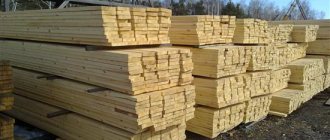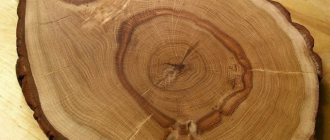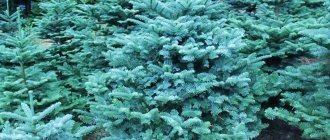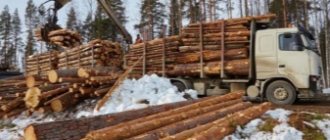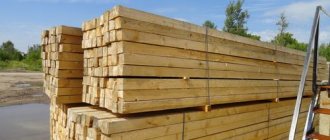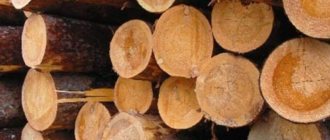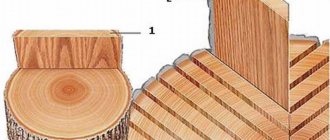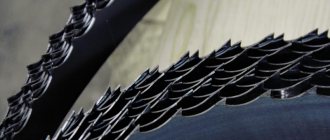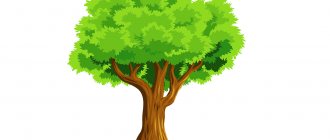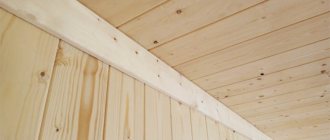Since ancient times, wood has been considered the best building material. The wood lends itself well to processing. Its porous structure contributes to heat retention and sound insulation. Wood reserves are renewable; their restoration requires solar energy and time. In Russia, the raw material base is 80 billion m3. An industry is developing for the deep processing of wood into plywood and cellulose. Round timber is processed into lumber for further use in house construction and furniture production.
ACCEPTANCE RULES
1.1. Lumber and blanks are accepted in batches.
1.1.1. A batch is considered to be the quantity of lumber or blanks of one grade (group of grades), species (group of species) and one purpose, documented in one quality document.
1.1.2. A batch of export lumber or blanks is considered to be the quantity of lumber or blanks of the same grade (group of grades), of the same thickness, of the same width (group of widths), of the same species, documented in one quality document.
By lumber and blanks of a group of grades we mean lumber and blanks that are allowed not to be sorted into separate grades and for which a special price is set in the price list (for example, ungraded lumber in accordance with GOST 8486 and GOST 26002).
1.1.3. The quality document must contain:
- name of the supplier company, its trademark, location (city or conventional address);
- grade (group of grades) of lumber (blanks);
- dimensions of lumber (blanks);
- wood species (groups of species);
- quantity of lumber (blanks) in a batch, mGOST 6564-84 Lumber and billets. Acceptance rules, control methods, marking and transportation (with Amendment No. 1) and items;
- designation of the standard.
1.2. The quality and dimensions of the lumber (blanks) of the batch are checked by selective control.
By agreement between the supplier (shipper) and the consumer or at the request of the latter, continuous quality control and size control of lumber (blanks) in the batch is used.
1.2.1. In quality and size sampling, the sample is taken evenly from different parts of the lot.
The sample volume and acceptance numbers when inspecting lumber or blanks intended for the needs of the national economy are given in Table 1.
Table 1
| Batch size | Sample size | Acceptance number |
| Up to 280 | 32 | 3 |
| From 281 » 500 | 50 | 5 |
| » 501 » 1200 | 80 | 7 |
| » 1201 » 3200 | 125 | 10 |
| » 3201 » 10000 | 200 | 14 |
| » 10001 » 150000 | 315 | 21 |
1.2.2. For lumber and blanks supplied for export, one-stage and two-stage types of normal or enhanced control are used. Enhanced control is applied at the request of the consumer or foreign trade association.
If there are special requirements for individual defects specified in the orders of foreign trade associations, control is carried out in accordance with these requirements.
The sample size and acceptance numbers for single-stage control are given in Table 2.
table 2
| Batch size | Sample size | Acceptance number | |
| normal control | enhanced control | ||
| Up to 280 | 32 | 3 | 2 |
| From 281 » 500 | 50 | 5 | 3 |
| » 501 » 1200 | 80 | 7 | 5 |
| » 1201 » 3200 | 125 | 10 | 8 |
| » 3201 » 10000 | 200 | 14 | 12 |
| » 10001 » 150000 | 315 | 21 | 18 |
The sample size and acceptance numbers for two-stage control are given in Table 3.
Table 3
4
| Batch size | Sample size | Acceptance number | ||||||
| first | second | normal control | enhanced control | |||||
| Up to 280 | 20 | 20 | 1 | |||||
1.3. Acceptance rules
1.3.1. (Deleted, Amendment No. 1).
1.3.2. During single-stage control, a batch of lumber or blanks is considered to satisfy the requirements of regulatory and technical documentation if the number of lumber in the sample that does not meet these requirements is less than or equal to the acceptance number. If the number of such lumber or blanks in the sample is greater than the acceptance number, then the batch is considered not to meet the requirements of the regulatory and technical documentation.
1.3.3. During two-stage control, based on the results of checking the first sample, a batch of lumber or blanks is considered to meet the requirements of regulatory and technical documentation if the number of lumber or blanks in the sample that do not meet these requirements is less than or equal to the acceptance number. If the number of lumber or blanks that do not meet the requirements of the regulatory and technical documentation in the sample is equal to or greater than , then the batch is considered not to meet the requirements of the regulatory and technical documentation. If the number of lumber or blanks that do not meet the requirements of regulatory and technical documentation exceeds the number , but is less than the number , then a second sample is selected. Based on the results of control of the second sample, the batch is considered to satisfy the requirements of regulatory and technical documentation if the number of lumber or blanks that do not meet these requirements in two samples is less than or equal to the number. If the number of such lumber or blanks in two samples is greater than the number , then the batch is considered not to meet the requirements of regulatory and technical documentation.
1.4. To control the surface roughness and moisture content of lumber or workpieces, a sample is taken from among the lumber or workpieces selected for quality and size control using a systematic selection method in accordance with GOST 18321.
1.4.1. To control the surface roughness, 10 lumber or blanks are selected.
1.4.2. The number of samples for humidity control is given in Table 4.
Table 4
| About batch size | Number of samples | |
| when determining humidity with an electric moisture meter | when determining humidity by drying-weight method | |
| Up to 280 | 8 | 5 |
| From 281 » 500 | 15 | 5 |
| » 501 » 1200 | 36 | 10 |
| » 1201 » 3200 | 50 | 10 |
| » 3201 » 10000 | 50 | 25 |
| » 10001 » 150000 | 50 | 50 |
Choosing wood: features of different species
Wood is one of the most common building materials in our country. Frame and timber houses are built from it, facades are finished, and roofs are covered. The wood is used in carpentry and is used to make designer interior items and carved sculptures.
Despite the general availability, this material has many secrets, knowing about which, you can make an informed choice rather than buying a “pig in a poke.” To choose the right wood, you need to understand its properties. Therefore, in today’s article we will talk about the characteristics of different types of wood.
So, from our material you will learn:
- What you need to know about wood before buying it.
- How does the wood of the most common species differ from each other?
- What kind of wood is best to build house walls and important structures from?
- Which wood is best suited for carpentry.
- How to choose and store lumber correctly.
Features of wood
Our portal has already talked in detail about the features of laminated veneer lumber, and compared profiled timber with regular timber. Anyone who has read these articles knows that the properties of a material largely determine the scope of its use. Therefore, before going to the market to buy “wood”, you need to ask yourself the question – where will you use it. It’s one thing if you need to lay wooden flooring on your terrace, and quite another if you need wood to make carved items. In the first case, increased strength (hardness) and resistance to weathering and insect pests are required from the wood, and in the second, preference should be given to softer (well-processed) varieties of wood.
The properties of wood largely depend on its structure and the thickness of the layers. Maximum strength and resistance to unfavorable external factors and, therefore, durability, have layers of late formation - the so-called. sapwood. It should be borne in mind that this statement is not true for all types of wood. For example, larch (unlike pine and spruce) has a core that is twice as strong as sapwood.
First of all, those who are going to build a house from rounded logs should remember this property of wood. Indeed, in the process of processing a solid tree trunk on a special machine, the outer, and therefore the most durable, part of the wood is usually cut off.
Rule: wood from different tree species has different physical and mechanical properties and characteristics. It is a mistake to divide wood into “good” and “bad”, because Often it is the wrong choice or use of wood that negates all its advantages and significantly reduces the service life of the product.
Wood species can be divided into two large groups:
- Conifers.
- Deciduous.
Having studied these groups and understood the properties of wood, we will understand for which jobs and structures this or that material is best suited.
Softwood
Traditionally, coniferous wood, which includes pine and spruce, is widely represented on any construction market. Less common are larch and cedar. Let's take a closer look at each breed.
Pine. We can say that this is a general construction material from which many people prefer to build houses. The prevalence of this type of wood and ease of processing are reflected. Due to its structure, pine is resistant to decay. In addition, due to the open cell structure, pine has high breathability. Therefore, walls built from this material “breathe.”
If we consider pine as wood for carpentry, it is often used in the manufacture of furniture, doors and window frames. Well-dried pine wood is excellent for sawing, cutting, planing, gluing and painting. Pine wood has a distinct texture, which makes it attractive for carvings and mosaics.
Spruce. The wood of this species is knotty and the texture is less pronounced than that of pine. These features impose restrictions on the use of spruce in carpentry, as well as in the manufacture of furniture. In addition, dried spruce wood is susceptible to splitting, so they try not to use it as a floor covering. Spruce is also more susceptible to rotting than pine.
Hermes-szFORUMHOUSE user
During drying, the cell structure of pine sapwood remains “open”; only the structure of the heartwood is closed. The cell structure of spruce is the same from sapwood to heartwood and “closes” when dried.
Due to differences in the cellular structure, spruce wood is less susceptible to moisture accumulation than pine wood. With seasonal fluctuations in humidity, the spruce practically does not change its volume.
Spruce, due to its loose structure and lower density, has a lower degree of thermal conductivity than pine wood. Therefore, walls made of spruce are warmer than those built from pine. Spruce wood is more flexible than pine and does not warp or burst under load. This affects the scope of its use.
In construction, spruce is in demand in the manufacture of floor beams, rafter systems, rafter purlins and slightly horizontal, intermediate supports for rafters.
In addition, spruce wood has a high resonating ability - a quality valued in the manufacture of musical instruments. Spruce easily splits and peels, so it is used to produce shingles and shingles.
Hermes-sz
In terms of deformation resistance and the ability to hold fasteners, spruce is almost equivalent to pine.
It should also be taken into account that the properties of wood are influenced by the place where it grows. For example, the density and resin content of pine and spruce wood is influenced by where the trees grew - in a mixed forest, on the edge, in a lowland, near a swamp, etc.
Larch. This material, due to its high strength, density (1/3 higher than that of pine and spruce), oiliness and resistance to biological damage and insect pests, is indispensable for the construction of log houses. Larch is used for the bottom backing board and crowns, i.e. — places located close to the ground and subject to the greatest influence of adverse weather factors.
Larch is indispensable in the manufacture of pile structures that remain in water for a long time. During the construction of St. Petersburg and Venice, larch piles were used, because When kept in water for a long time, this wood does not rot, but “petrifies.” Due to their dense structure and density, walls made of larch are less warm than those made of spruce or pine. In addition, larch is heavier.
Hermes-sz
If we take the “thermal protection” of walls made of logs or pine beams as 100%, then the same walls made of spruce or cedar will be approximately 10% “warmer” than those made of pine, and those made of larch will be 25-30% “cooler” than pine ones.
Among the features of larch, it can be noted that this material “breathes” poorly, but is difficult to ignite. Thanks to its beautiful texture, larch wood is in demand in furniture production. Despite the complexity of processing, larch is also used for carving and mosaic work.
Cedar. Cedar has soft wood that is easy to cut and saw. Cedar blanks are easily processed on lathes, and the wood has a beautiful texture. In addition, cedar is resistant to rot. Products made from this wood can be placed outdoors.
Hardwood
If he talks about “carpentry,” then deciduous wood is traditionally in demand in this business. First of all, we can highlight oak.
Oak. Everyone knows the high strength, hardness and durability of oak wood. Oak is resistant to rotting, and due to the abundance of tannins, this wood pickles well. Oak wood is tough, can be easily processed with cutting tools, and can be bent. The texture of the wood fibers is clearly expressed. Furniture made from oak cannot be confused with any other.
NatovichUser FORUMHOUSE
I have been working in furniture carpentry for a long time. I had to work with pine. Didn't like it - boring material. Oak is a completely different matter! This is a tree with character. He exudes positive energy. The products are durable and beautiful. As they say, “forever.”
When processing oak wood, you should remember the dangers and carcinogenicity of fine dust. Therefore, we work with oak in a well-ventilated area. We use respiratory protection - a respirator.
Ash. Ash wood is similar to oak. This can be seen in the similarity of the fibers, but the texture of ash wood is lighter than that of oak. Ash has high strength and toughness, but under unfavorable conditions (high humidity and dampness), ash wood begins to rot. Ash must be antisepticized with protective agents.
After steaming, ash bends easily. This wood also finishes well. Due to the tendency to form growths (like all hardwoods) - thickenings on the trunk - the so-called. burls, which have a higher hardness than the mother wood, ash is often used in applied arts. The burl is well suited for creating artistic products that have an unusual “stone” texture similar to “malachite” or “marble”.
The similarity with oak will determine the main area of use of ash - furniture production, the manufacture of sports equipment, and stair railings.
Beech. Beech wood is comparable in strength to oak. Just like ash, beech can be sawed well, bent after steaming, drilled, and processed with a cutting tool. But, due to its susceptibility to moisture accumulation, beech wood can begin to rot. It is worth remembering this if you plan to use beech products in damp rooms. To protect beech wood, antiseptics and special paints should be used.
Although beech does not have a pronounced texture, when cut tangentially and radially, the tree, as they say, begins to “play.” Therefore, veneer is planed from beech, which is then used for veneering furniture. Beech is also used in the manufacture of bent furniture elements and parts of musical instruments.
Selection and storage of wood
In addition to knowledge about the types of wood and its properties, it is equally important to know how to choose it when purchasing and then store it. Regardless of what you need wood for - building a house or carpentry work, the first assistant when choosing is a tape measure. The selection algorithm is as follows: we determine the required dimensions of wood (thickness, length and width of the board). In order not to count manually, we use a special table to find the number of boards (pieces) contained in 1 cubic meter of wood of a given size.
For example, you need a board 150x50x6000 mm. There are 22 boards in 1 m³. Armed with this knowledge, he goes shopping.
We select wood without visible damage from insect pests and signs of rotting. Boards (depending on the grade and type - edged or unedged) must be without wane, cracks, chips, or delaminations. We select boards by measuring their geometric dimensions - width, length and thickness. The dimensions of the board must correspond to the stated ones, and not “walk” from board to board.
When purchasing boards, we personally control the selection and loading process! This will help minimize the amount of defective material and will guarantee that unscrupulous sellers will not “accidentally” load you with rotten or substandard boards.
We also look at the ends of the boards. Based on the curvature of the growth rings, you can “estimate” the size of the cut trunk. You can also understand from which section of the trunk the board was cut. This point is worth paying attention to, because... After cutting the trunk, when dry, the boards may warp. Depending on which area the boards were cut from, the direction of the deflections and convexities changes.
For clarity, you can use the following figure.
If possible, purchase a dry board. If this is impossible for a number of reasons (including economic ones), we bring the boards to the required condition, i.e. We dry them ourselves.
To do this, we put the purchased boards in a stack, not forgetting to lay spacers (bars) between the boards, which will ensure free flow of air between the boards. The stack must be raised above the ground, blown (ventilated) from all sides, and closed from above from direct exposure to adverse atmospheric phenomena.
From our material you can learn how to properly dry wood and how to choose material for building a wooden house. Our experts will also talk about all the nuances of choosing boards for building a frame house and the principles of constructing the correct stack for atmospheric drying of wood. The next topic will be of interest to those who want to independently master the secrets of making oak furniture.
Our videos tell about the features of a log house and show the secrets of creating a log bathhouse “Fairy Tales”.
CONTROL METHODS
2.1. The volume of lumber and blanks is determined according to GOST 5306.
2.2. Determination and measurement of wood defects and processing - in accordance with GOST 2140 and regulatory and technical documentation for products.
2.3. Sizing
2.3.1. To determine the dimensions of thickness and width, use a metal ruler in accordance with GOST 7502, a measuring ruler in accordance with GOST 427, and a caliper in accordance with GOST 166; length - a metal ruler in accordance with GOST 7502. It is allowed to carry out measurements using templates, gauges and other tools that have a certificate of verification of compliance with measurement accuracy.
2.3.2. The length is determined in meters by the shortest distance between the ends of lumber or blanks, rounded to the second decimal place.
2.3.3. Thickness is determined in millimeters at any point along the length of the lumber or workpiece, but not closer than 150 mm from the end.
2.3.4. The width is determined in millimeters as follows: for edged ones with parallel edges - anywhere along the length of the lumber or workpiece where there is no wane, but no closer than 150 mm from the end; for unedged, one-sided edged - in the middle of the length of the lumber or workpiece as half the sum of the widths of both layers (excluding bark and bast), and shares up to 5 mm are not taken into account, shares of 5 mm or more are considered 10 mm; for edged ones with non-parallel edges - in the middle of the length of the lumber or workpiece on a face that does not contain wane. Size control is carried out after determining humidity.
2.4. Surface roughness parameters are determined according to GOST 15612. To establish the surface roughness parameter, the 10 deepest irregularities on the worst face are measured.
2.5. The moisture content of lumber or blanks is determined according to GOST 16588.
Properties of rare trees
The trees in question grow within our country. Huge forest spaces make it possible to obtain timber with the necessary characteristics.
However, craftsmen use material brought from abroad. Imported timber has other properties and is used to make furniture and decorations.
Wood imported to Russia:
- Red tree;
- Ebony;
- Eucalyptus;
- Fernambuc;
- Rosewood;
- Satin tree.
The wood of these trees allows you to create unique things.
MARKING
3.1. Lumber with a length of 1.0 m or more and blanks of all lengths are subject to marking. Labeling of lumber supplied for export is carried out in accordance with the regulatory and technical documentation for the products.
3.2. The end or face of the lumber or workpiece must be marked indicating the type of lumber or workpiece. The variety designation is indicated in Table 5.
Table 5
| Variety | Variety designation | ||
| paint | chalk | ||
| lumber | blanks | ||
| Selected | One horizontal stripe (-) | 0 | |
| 1 | One dot or vertical bar (. or |) | | | 1 |
| 2 | Two dots or two vertical stripes (.. or ||) | || | 2 |
| 3 | Three dots or three vertical stripes (... or || |) | || | | 3 |
| 4 | Not marked | ||
Markings must be legible and applied with permanent paint or wash-resistant chalk. When marking lumber intended for shipbuilding, selected and 1st grades, the letter “C” is additionally applied (for example, 0C or 1C). When marking blanks intended for equipment construction, the letter “O” is additionally applied, for skis - the letter “L”, for resonant ones - the letter “P”. Lumber and blanks with a thickness of less than 25 mm are marked with stripes, those with a thickness of 25 mm or more are marked with dots. The location of markings on the ends and faces must correspond to the diagrams specified in Appendix 1.
3.3. Lumber and blanks of the same grade, shipped in packages, are not marked individually. Package marking is in accordance with GOST 19041. (Changed edition, Amendment No. 1).
Eurolining
Eurolining is a wood material that has retained all the properties of a natural element. The big advantage is the unique locking system, which allows you to conveniently and quickly lay the lining, without the use of additional adhesive materials. Eurolining can be made from almost any type of wood. The most popular are pine needles and larch. Needles have a wide price range, including ordinary pine and expensive cedar.
But we'll look at the most popular material. Moreover, simple euro-lining pine needles are used to organize baths, saunas, gazebos, balconies, etc. At the same time, lining is not always finished in a wooden house.
TRANSPORTATION
4.1. Lumber and blanks are transported by rail, road and water transport in accordance with the rules for the carriage of goods in force for this type of transport.
4.2. Lumber and blanks are transported in packaged form. Package sizes are in accordance with GOST 16369, packaging is in accordance with GOST 19041. Transportation of lumber and blanks in unpackaged form is permitted by agreement between the manufacturer and the consumer. During transportation, unpackaged lumber and blanks are placed in stacks separated by horizontal spacers and vertical posts 65-70 mm thick. Horizontal spacers are laid every 1200 mm, vertical posts are installed in the middle of the width of the stack. It is not allowed to overlap lumber and workpieces.
4.3. When transporting lumber and blanks in open vehicles, they must be protected from precipitation and pollution.
Elements for stairs, types of steps, platforms, beams:
For staircase elements (balusters, beams, steps, turning platforms and others) there is a similar classification.
But in addition to the AA and AB varieties, the Extra variety is also available.
- The “Extra” mark marks steps and turning platforms with a solid-lamella surface with a smooth structure of uniform color.
- Grade AA - mainly used on spliced type products. The surface has minimal natural errors.
- Grade AB – with darkening in the form of living fused knots. The most cost-effective option. Suitable for stairs in country houses.
APPENDIX 1 (mandatory). LABELING OF TIMBER
APPENDIX 1 Mandatory
MARKING OF TIMBER AND BLANKETS WITH PAINT
| Selected variety | 1st grade | 2nd grade | 3rd grade |
Marking on one of the ends for lumber and blanks with a thickness of 25 mm or more
Marking on one of the ends for lumber and workpieces less than 25 mm thick
MARKING OF TIMBER (INCLUDING BEAM) AND BLANKETS WITH CHALLENGES ON THE PLATE
| Selected variety | 1st grade | 2nd grade | 3rd grade |
Grade marking for lumber of any thickness
Use of coniferous building materials
First grade edged boards are actively used for general construction work. It is used for installing roof truss systems, as well as load-bearing structures. Lumber is also used for building houses. It is used for the installation of beams and interfloor ceilings. Coniferous products are used to make fences and subfloors.
Second-grade boards are used in construction (in particular, in the manufacture of formwork). It is used to make sheathing on pitched roofs.
Third grade lumber is suitable for the construction of temporary buildings and small sheds, the production of pallets and various containers.
Tree is different from tree
After sawing, boards from even the same tree can differ significantly in appearance. Different cutting methods are used for different parts of the trunk, and the direction of the wood fibers in the finished board depends on this. In addition, differences can be caused by the color and shade of the wood, the presence of sapwood (young layers of wood that look like lighter areas when cut) and natural defects - knots and cracks. The wood pattern depends on all these factors: either it will be uniform and monochromatic, or variegated, with a large number of inclusions and color transitions. If you lay a floor from wooden planks that are so different in appearance, it will look completely inharmonious. Therefore, during woodworking, planks are divided (selected) according to certain external characteristics into several groups, which are varieties or types of wood sorting.
It is important to understand that within the framework of selection we are talking exclusively about the appearance of the wood
, and not about its quality, durability or hardness. All types of wood sorting are the same in operation, differing only in appearance. Therefore, the choice of wood type when purchasing parquet products is absolutely subjective and comes down solely to personal preferences: some people like a calmer and more monochromatic wood pattern like “Select”, others like the bright and colorful “Country”. Their quality is exactly the same.
